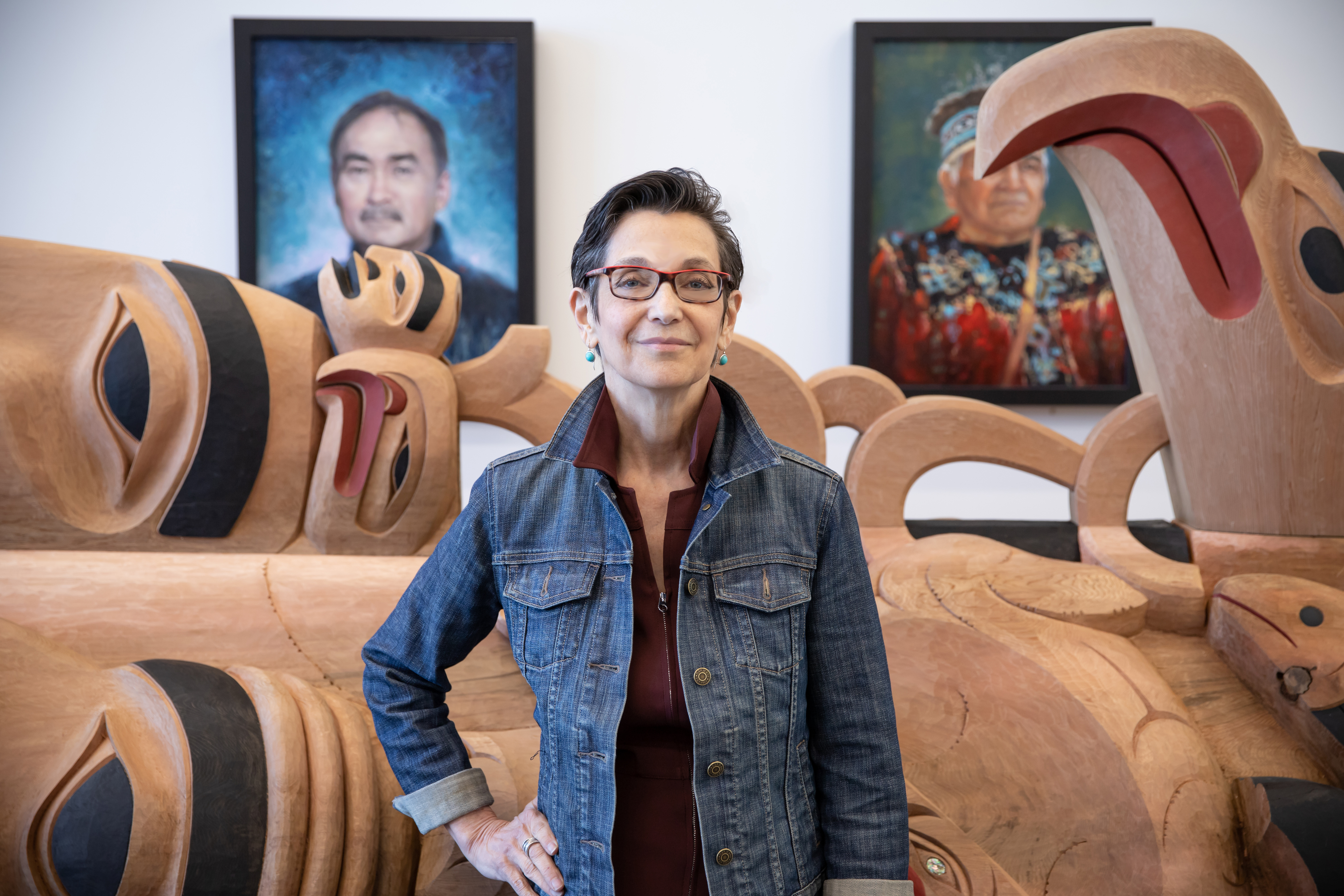New Course Charts the Power of Place and the Now-ness of Indigenous Creative Practices

Artist and ECU faculty member Mimi Gellman at the Aboriginal Gathering Place at Emily Carr University in July, 2022. (Perrin Grauer / Emily Carr University)
Posted on | Updated
The Indigenous-led course introduces students to Indigenous ways of knowing through the lens of contemporary artists and their cultural expressions.
A significant new pilot course at Emily Carr University will introduce students to social, ecological, cultural and political issues through the lens of contemporary Indigenous artists and their cultural expressions.
Titled Indigenous Presence/Locating Ourselves in Place (FNDT-115), the course emphasizes the now-ness of Indigenous presence and creativity and its influence on contemporary society, Indigenous artist and ECU faculty member Mimi Gellman tells me.
“We’re looking at ways of learning about and understanding Indigenous people in this moment, in the present, as we are living out our lives today,” Mimi says. “We are here. This isn’t the past. This isn’t historic. This is how we walk, how we learn, what we do, how we represent ourselves, our governance, our languages.”
Delivered by the Faculty of Community and Culture, the Indigenous-led course is open to all ECU undergrad students as an elective in the Fall 2022 semester. Three sections are being taught respectively by Mimi Gellman (Anishinaabe Métis), designer and architect Pat Vera (LatinX Mestiza), and artist and designer Leo Vicenti (Jicarilla Apache).
Foundation students can take this course as an elective in the Fall term, and enroll in Creative Process in the Spring semester.
Painting by Heiltsuk artist Shawn Hunt.
The course will focus on Indigenous lives and ways of being beyond the impacts of colonization, Mimi continues. A history of relations between settler Canadians and Indigenous people will be taught. But these lessons will be a foundation for broader explorations of contemporary Indigenous “creative resilience,” Mimi adds.
“We’re in a new era. This is an era of reconciliation, reclamation, rejuvenation and revitalization,” she says. “Communities are rebuilding and reclaiming their traditional ways of knowing and they’re doing so in both customary and contemporary ways. We’re contemporary peoples. We embrace cutting-edge technologies, while still living Indigenous lives and forwarding Indigenous values.”
Another central theme of the course is the importance of “place,” and the significance of the “local.” Mimi, Pat and Leo will teach how these concepts influence and inform the lives of artists and designers. In doing so, students will learn how they are situated in a “reciprocal, responsible relationship with the Indigenous ethos of ‘all my relations,’” Mimi writes. All my relations, she notes, is a way of talking about the inextricable link between humans and all other beings in the universe.
“Our relations aren’t just human relations, but include relationships with the earth, rivers, plants, trees, animals, stones, birds,” she says. “‘All my relations’ means everyone and everything is connected, is worthy of respect, and is cared for and included.”
Students will learn about how Indigenous ways of knowing emphasize a “respectful use of material resources and awareness of the environment.” This awareness is grounded in the “Indigenous values of respect, responsibility, reciprocity, humility and sustainability.”
Each three-hour class will include dedicated time for reflection and consideration, to allow students to weigh and absorb what they’ve been taught. “To understand and to learn through the lens of your own personhood is an Indigenous value,” Mimi says.
Tahltan-Tlingit artist and master carver Stan Bevan in his studio.
The point, Mimi continues, is to show students how Indigenous cosmologies, values, creative practices, and ways of knowing and doing articulate ideas that point far beyond the realm of cultural production. Whether a person is Indigenous or not, such ideas provide a model for how a life — as well as art, design and research — can be attuned toward justice, equity and accountability on Indigenous lands.
“It’s a way of walking and being in the world,” Mimi says.
Registration for Indigenous Presence is open now. Space is limited, and students are encouraged to secure their spot as soon as possible. Learn more about Indigenous Presence / Locating Ourselves In Place online.
Read our previous stories about Mimi and Pat now via ecuad.ca/news.
—
Visit us online today to learn more about First-Year Foundation studies at Emily Carr University.